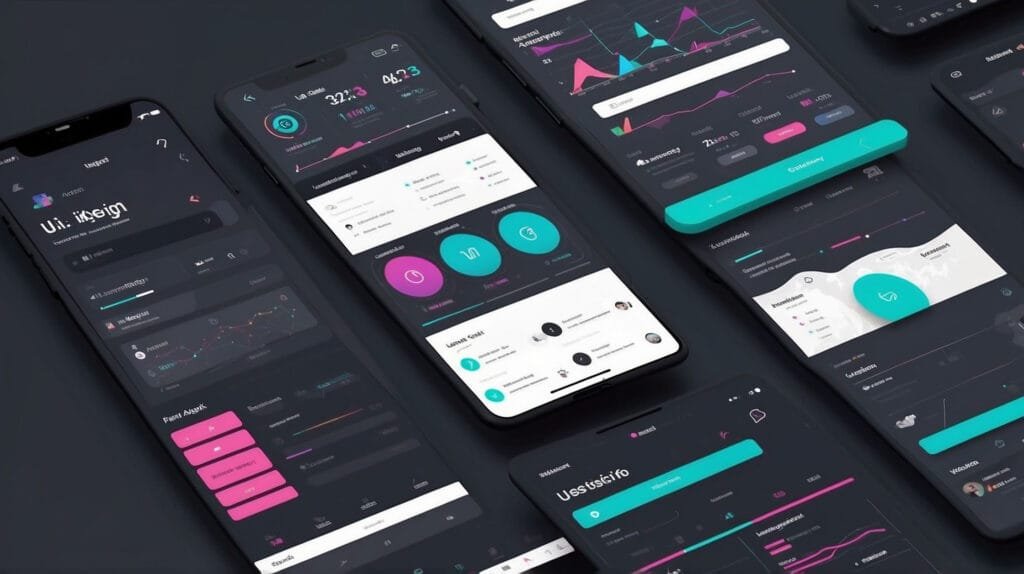How to Create a User-Friendly Website: Insights from UI/UX Designers
Designing a user-friendly website is essential for ensuring visitors have a seamless and enjoyable experience, encouraging them to return and engage. Leading UI/UX designers emphasize creating websites that are not only visually appealing but also functional and intuitive. This blog provides expert tips to help you craft a website that prioritizes user satisfaction.
Introduction
In today’s digital landscape, a user-friendly website is the cornerstone of any successful online presence. A great UI/UX designer knows that ensuring visitors can easily find information, navigate effortlessly, and achieve their goals without hassle is crucial. In this blog, we’ll explore actionable strategies shared by top UI/UX designers to help you design a website that excels in usability and functionality.
Understand Your Audience
A user-friendly website starts with knowing your audience. Leading UI/UX designers agree that identifying user needs and preferences enables you to design a website tailored to their expectations.
- Gather insights through surveys, interviews, and user feedback.
- Analyze user behavior on your existing website to pinpoint problem areas.
- Develop user personas to represent different audience segments and guide your design decisions.
Simplify Website Navigation
An intuitive navigation system is a hallmark of a user-friendly website. Top UI/UX designers focus on ensuring visitors can quickly locate what they need without confusion.
- Keep the menu structure simple and consistent across all pages.
- Limit menu items to avoid overwhelming users with too many options.
- Add a search bar to enable users to access specific content instantly.
Make Your Website Mobile-Responsive
With a significant portion of web traffic coming from mobile devices, ensuring mobile responsiveness is non-negotiable. As any experienced UI/UX designer will attest, a responsive design enhances the user experience across all devices.
- Adopt a responsive design framework to adapt your site to various screen sizes.
- Optimize images and videos for faster loading on mobile devices.
- Test on multiple devices to identify and resolve any display or functionality issues.
Leverage Visual Hierarchy
A strong visual hierarchy helps users focus on the most important elements on a page, a strategy employed by every successful UI/UX designer.
- Use headings and subheadings to organize content into clear sections.
- Highlight critical information with contrasting colors, larger fonts, or bold text.
- Incorporate white space to create a clean and uncluttered design.
Improve Loading Speed
Slow-loading websites drive users away. A skilled UI/UX designer knows the importance of optimizing performance to keep visitors engaged.
- Compress images and files without losing quality to speed up loading times.
- Reduce heavy scripts and plugins that slow down the website.
- Enable browser caching to load frequently used resources faster.
Enhance Accessibility
Creating an accessible website ensures inclusivity, a vital consideration for any professional UI/UX designer.
- Provide alt text for images to support screen readers.
- Use high-contrast color schemes to improve readability.
- Ensure keyboard navigation for users who cannot rely on a mouse.
Test and Iterate
Continuous improvement is key to maintaining a user-friendly website. Top UI/UX designers recommend regular testing and incorporating user feedback to address usability issues.
- Conduct usability tests with real users to uncover pain points.
- Implement feedback forms to gather insights directly from your audience.
- Monitor website analytics to identify trends and areas for improvement.
Use Consistent Branding
A cohesive design with consistent branding elements like logos, colors, and typography builds trust and recognition. Experienced UI/UX designers ensure these elements align with the brand identity and are uniformly applied across the site.
Incorporate Call-to-Actions (CTAs)
Clear and strategically placed CTAs guide users toward desired actions, such as signing up or making a purchase. A skilled UI/UX designer uses action-oriented language and ensures buttons stand out visually.
Provide Clear Contact Options
Make it easy for users to reach you by including multiple contact methods, such as forms, email addresses, and social media links. Adding a live chat feature is another great tip from expert UI/UX designers.
Conclusion
Designing a user-friendly website requires careful planning, ongoing research, and attention to detail. By following these expert recommendations from UI/UX designers, you can create a website that is visually appealing, functional, and accessible. Keep refining your site based on user feedback to meet evolving expectations and maintain a positive user experience.



